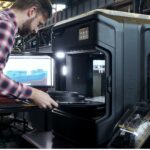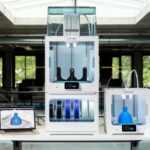V-Ray for Softimage
V-Ray for Softimage offers a rich set of functionalities for fast and efficient rendering and an intuitive approach towards shading and lighting.
RENDERING CORE
New Progressive Production Renderer for interactive and production rendering.
Render Mask to specify render regions using an object selection or object IDs.
Deep Image support including OpenEXR 2.0 output.
Efficient Multicore Ray-Tracing Engine – V-Ray is an optimized, multicore ray tracing solution, rendering complex geometry, shading, illumination, and optical effects with unprecedented speed and accuracy.
GEOMETRY
ICE Support – Render particles, strands, hair, and geometry produced by Softimage’s award-winning ICE system.
Proxy Objects – V-Ray Proxy objects are an indispensable tool for managing scene memory and efficiently rendering massive amounts of geometry. V-Ray Proxy objects are dynamically loaded and unloaded at render-time, saving vital RAM resources. V-Ray Proxy supports ICE positions and kinematic properties.
Watch the V-Ray Proxy tutorial here.
Dynamic Geometry – V-Ray is fully optimized for rendering dynamic geometry such as displacement, proxy objects, fur, hair.
Animated Parameters – V-Ray for Softimage supports all geometry animation and deformations applied through animated parameters and key frames, the Animation Mixer, and ICE-based simulations. All geometry modifications, rigging, and Softimage operator stack levels are supported.
Incremental Exporting – Once a model is tessellated, V-Ray for Softimage incrementally caches the results, significantly reducing export times.
MATERIALS & SHADING
VRaySkinMtl with layered reflections and artist-friendly controls.
Support for emFluid 5.
Watch our video tutorial introducing the V-Ray Material, the V-Ray Blend Material and the V-Ray Car Paint Material.
Physically-based Materials – Create materials based on physical properties using VRay’s versatile shaders.
Render Tree – V-Ray for Softimage supports many built-in Render Tree procedural shaders, computational, and logic nodes; and new ones are added regularly.
Layered Materials – V-Ray Blend materials quickly render complex materials using the V-Ray Blend material, or use built-in Softimage texture layers for additional flexibility.
Ptex – Ptex greatly simplifies the texturing process by efficiently storing textures and eliminating the need to assign UVs.
Weightmaps – Apply per-vertex transformations to geometry and color attributes using Weightmaps.
Hair and Fur – Render hair and fur with unprecedented control, quality, and speed using the VRayHairMtl shader.
Watch the VRayHairMtl tutorial here.
Car Paint Material – VRayCarPaintMtl offers controls for base paint, clear coat, and metallic flakes within a single, optimized shader. The VrayCarPaintMtl simplifies the creation of complex, multi-layered automotive paints.
Toon Shader – Create simple cartoon outlines using the V-Ray Toon shader.
Dispersion – Add realism using dispersion to trace and refract light based on its wavelength.
LIGHTS & ILLUMINATION
Physically-based Lights – Create realistic illumination using physically-based lights, including IES lights and texture-mapped area lights.
V-Ray Sun and Sky – Emulate real-world atmospheric lighting conditions sing the V-Ray Sun and Sky system.
Dome Light – Create simple, artifact-free image-based lighting using the Dome Light. Its powerful importance sampling analyzes HDR images and optimizes light tracing and GI precision.
CAMERAS & OPTICS
Motion Blur – Render true 3D motion blur using the V-Ray Physical Camera. Additional settings provide complete control over camera motion blur and shutter efficiency.
Depth of Field and Bokeh Effects – Create fast and accurate depth of field with bokeh effects using the V-Ray Physical Camera.
Lens Distortion using Nuke Displacement Maps – Import displacement maps from Nuke to match lens distortion.
RENDER OUTPUT
Render Elements -An extensive list of render elements allows for complete control in compositing.
Watch the V-Ray Render Elements tutorial here.
Multi-channel Scanline OpenEXR Files – Produce scanline-based OpenEXR files for efficient processing in compositing applications.
SCENE OUTPUT
Support for .vrscene Output – Using V-Ray’s native .vrscene file format, scenes can be scripted for post processing and easily distributed in a render farm environment.
Import Material Properties – Basic material properties created in 3ds Max or Maya can be imported to V-Ray for Softimage.















